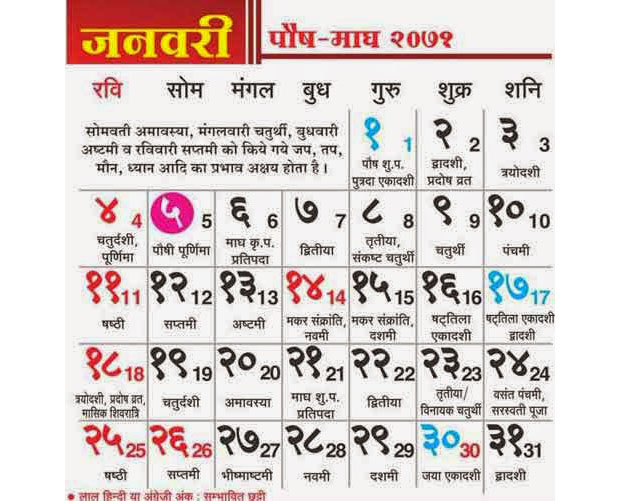National Calendar Of India | Saka Calendar

Indian National Calendar is derived from Vedas of ancient times. It uses the Saka calendar also known as Shalivahana Shaka calendar.
It is used alongside the Gregorian calendar by the Gazette of India, All India Radio, and the Government of India. For many governmental and many other public purposes we follow the Gregorian calendar, which is used in the greater part of the world. Gregorian calendar is also used for civil and administrative purposes.
The Saka calendar also knows as Panchang is used for Vedic astronomy and astrology and Indian festivals.

Suggested Read: National Symbols Of India
There are regional diversities of the Panchang. The differences are like the beginning of the month, year, different importance in celebration of festivals and days. eg. There are Tithi which is consecutively repeated for 2 days of the Christian calendar. Some celebrate it on day 1, whereas some on the 2nd day. Mostly the history and geography of the regions are the main reasons for the diversity
Panchang means calendar, a Hindu way of measuring time. As said earlier, there are many regional varieties of Panchang. Not only in India this Saka Calendar is also used in Java and Bali among Indonesian Hindus. Indian Calendars or Panchang used for fixing updates and moments of Hindu, Buddha, and Jains festivals in the different states of India and in many cases for civil purposes also.
The Indian Calendars are used not only for fixing up the dates and moments of religious observances but also for the purpose of dating of documents and for certain civil purposes not only by the rural but also by a large section of the urban population.
There is a great divergence in practice in different parts of the country in this respect. Therefore a unified solar calendar has been proposed for all-India use for civil purposes.
But for calendar calculations, our astronomers all over India have been using only the Saka era since Aryabhata (500 A.D.) certainly and probably from much earlier times, and in local almanacs, other eras are simply imposed on it.
It was officially adopted in India on 22 March 1957 or 1 Chaitra 1879, Saka Era. Its first month is Chaitra has 30 days and starts on March 22 while leap year has the first month of 31 days and starts on March 21. Every month in the first half of the year has 31 days.
Suggested Read: National River Of India
Calendar Structure
The months of India’s national calendar are as follows.
| Month | Duration | Begin | Solstices |
| Chaitra | 30/31 | March 22 /March 21 | Vernal Equinox Day and night are equal |
| Vaishakha | 31 | April 21 | |
| Jyeshtha | 31 | May 22 | |
| Ashadha | 31 | June 22 | Summer Solstice Dakshinayan starts |
| Shravana | 31 | July 23 | |
| Bhadra | 31 | August 23 | |
| Ashwin | 30 | September 23 | Autumnal Equinox Day and night are equal |
| Kartika | 30 | October 23 | |
| Agrahayana | 30 | November 22 | |
| Pausha | 30 | December 22 | Winter Solstice Uttarayan starts |
| Magha | 30 | January 21 | |
| Phalguna | 30 | February 20 |
Indian religious festivals were fixed by the movement of the moon and sun. Chaitra would be the first month of the solar year. The Indian Astronomers also begin the year with Chaitra. The vernal and autumnal equinoxes are two important festivals among Indians.
Another calendar used in equal importance with the Saka calendar in India is the Vikram Samvat calendar, which is a solar and lunar calendar associated with the Hindu religion.
Suggested Read: National Flower Of India
History
The Indian year, throughout ages, has been of two kinds, the solar and the lunar, each having its own starting day, The year beginning for the two kinds of years, for different eras.
For Saka, Era Chaitra would be the first month of the solar year and is the era par excellence which has been used by Indian astronomers all over India in their calculations since the time of the astronomer Varahamihira (died 587 A.D.) and probably earlier.
The Indian almanac-makers, even now, use the Saka era for calculations and then convert the calculations to their own systems. Calendars are nothing but predictions of these events and were early framed on the basis of past experiences.
Suggested Read: National Fruit Of India
Hindu Festival Calendar
The Hindu festivals often coincide with seasonal changes. The festivals coincide with the movement of the sun and moon such as Full Moon or the New Moon or they are celebrated on the day after the Moon phase.
Vaisakhi, Pongal, and those associated with Sankranti are based on the solar cycle, while other festivals are based on the Lunar cycle and their dates vary on the Georgian calendar, like Maha Shivaratri, Holi, Guru Purnima, Ganesh Chaturthi, and Diwali.
Difference between Saka Samvat and Vikram Samvat
Saka Samvat and Vikram Samvat are two commonly used calendars in India. Shaka Samvat is India’s national calendar which started in 78 BC whereas Vikram Samvat started in 57 AD.
Both have the same ways of naming the months both have Shukla Paksha and Krishna Paksha. But the difference is only at the beginning of the month.
The new month starts in the Vikram Samvat with the Krishna Paksha which comes after the full moon, whereas the new month begins in the Shaka Samvat with the Shukla Paksha which comes after the new moon.
Suggested Read: National Days Of India
